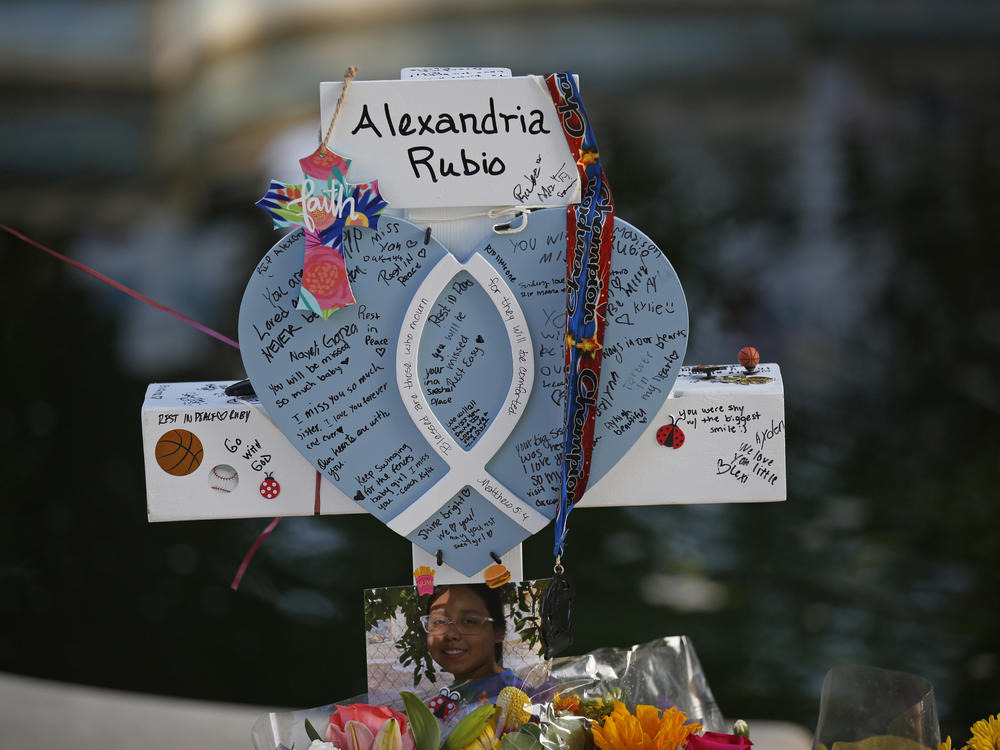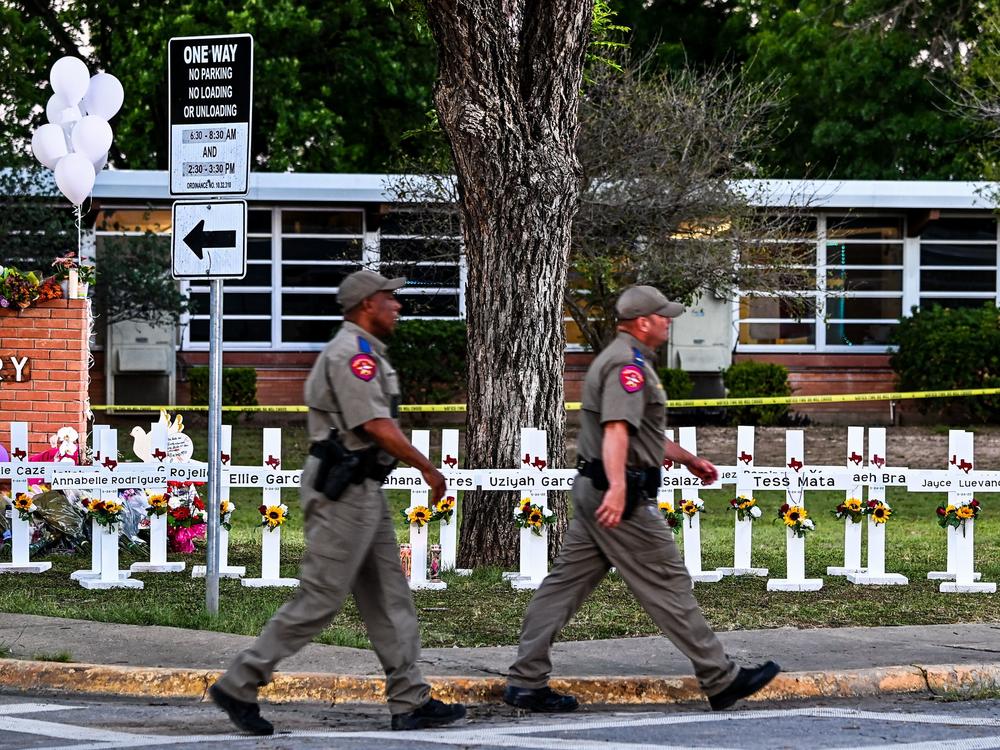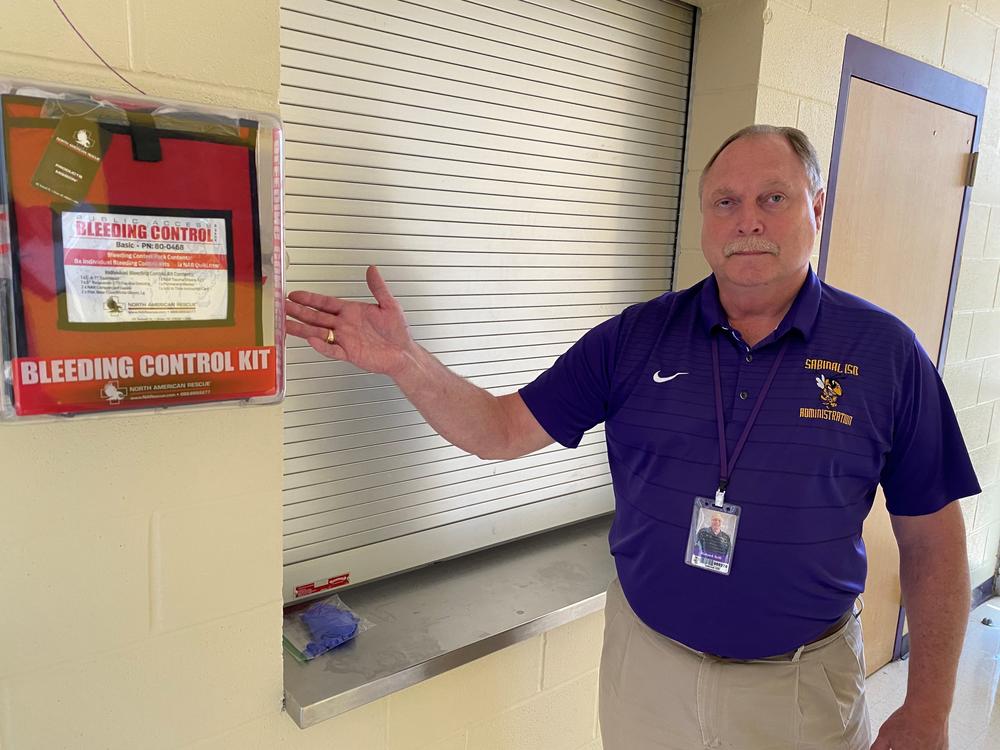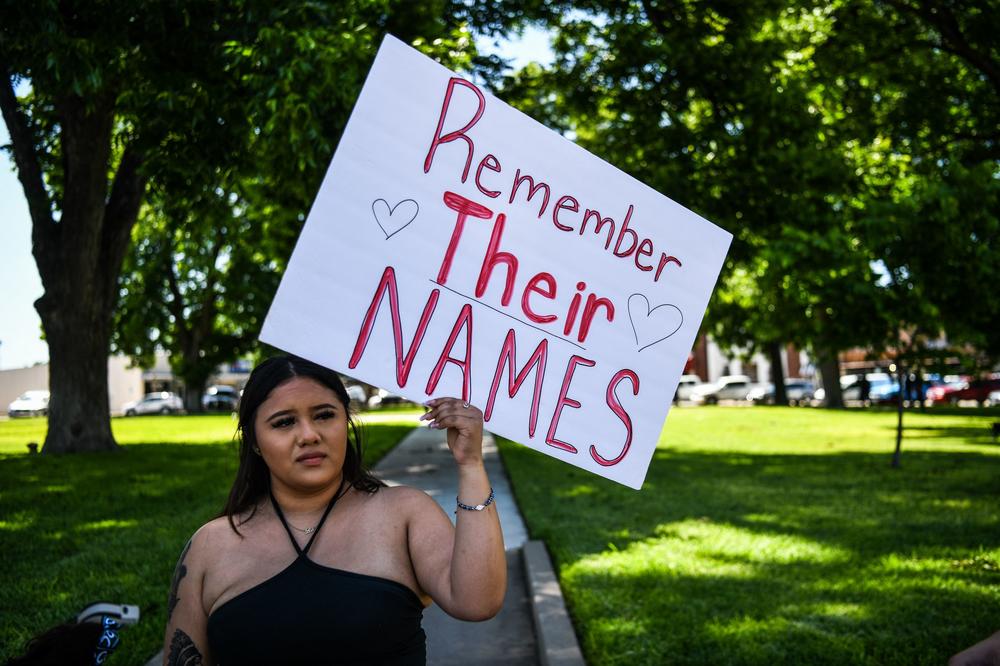Section Branding
Header Content
The Uvalde shooting renews questions about school security
Primary Content
Updated May 28, 2022 at 12:13 PM ET
UVALDE, Texas — Tuesday was a busy, happy morning at Robb Elementary School in Uvalde. It was the end of the school year, the children who had made the honor roll were being recognized and parents had come to school for the occasion.
"My granddaughter and her husband were there," says a retired Baptist pastor, Julian Moreno, "and Lexi had gotten the award for being a straight-A honor student."
Moreno's great-granddaughter, Alexandria "Lexi" Rubio — who at 10 had already dreamed of going to law school at a university in San Antonio — would not survive that day. She was one of the 19 children who would be executed later that morning in her fourth-grade classroom by a high school dropout armed with an assault-style weapon that he purchased days after he turned 18.
The mass murder of innocents in Uvalde has raised critical questions about school security. How do you harden schools without turning them into fortresses? In Uvalde, angry residents want to know how their vaunted school security plan failed, allowing the worst mass school shooting in Texas history.
Like other states in this dark era of school shootings, Texas has reviewed and tightened security protocols again and again.
Today, schools — mammoth and tiny — have had to adopt far-reaching security measures. Texas requires active-shooter drills, behavioral threat assessments to identify violent students, and detailed emergency operation plans that are audited every three years. Locked doors — known as access control— are strongly recommended, but not mandated.
At Robb Elementary, the assailant, Salvador Ramos, found an open back door, ran inside, barricaded himself in a classroom, and started killing.
"Obviously something fell through the cracks," says a grief-stricken Julian Moreno. "Something failed somewhere along the way."
What went wrong?
First, the outside back door and the classroom doors were unlocked.
"At 11:27, we have video evidence that the exterior door where we knew the shooter Ramos entered was propped open by a teacher," Steve McCraw, director of Texas Department of Public Safety, told reporters Friday. He said the teacher had gone to her car to get her cellphone.
Second, there was the police response. McCraw acknowledged that 19 law enforcement officers were in the hallway outside the classroom where the gunmen had locked himself in with the fourth-graders and their teachers.
As a terrified student inside the classroom whispered into a cellphone on a 911 call begging police to rescue them, the police inside the school waited for more than an hour before a Border Patrol tactical team finally arrived. The federal officers stormed the classroom and killed Ramos. The chief of the school police department called for the delay, McCraw said, because he thought the gunman was barricaded and the children were no longer at risk.
"From the benefit of hindsight where I'm sitting now, of course, it was not the right decision," McCraw said. "It was the wrong decision. Period. No excuse for that."
The Uvalde Consolidated Independent School District has posted on its website a page titled Preventative Security Measures to reassure parents. It was there before the shooting. A list of 21 security procedures begins with the school police department and its four officers. Other measures include threat assessment teams, social media monitoring, campus fences, and locked classrooms at all times.
All, apparently, failed. Uvalde Schools is not speaking to the media at this time to discuss its safety protocols.
"You can have the best plan in place and you can train and drill to that plan, but that's definitely not going to stop evil from coming in," says Kathy Martinez-Prather, director of the Texas School Safety Center, located at Texas State University in San Marcos. That is the central clearinghouse for training, research and technical assistance for Texas schools and community colleges.
"We can't prevent these events from happening 100% of the time," she continues, "but we can prevent them from happening in the majority of cases." A school may not be able to keep out a determined gunman, who may shoot out windows to gain entry, but she says it's important to always have the doors locked "because what it does is it creates a time barrier."
Martinez-Prather says Texas got serious about protecting schools after the 1999 massacre at Columbine High School in Colorado where 13 were killed. The state doubled down again after the 2018 mass killing at Santa Fe High School, near Houston that left 10 dead.
Texas officials boast that they've invested $100 million in recent years for districts to enhance school security. Yet Texas Republicans, who control state government, after mass shootings have repeatedly refused to enact any restrictions on acquiring firearms.
Martinez-Prather wouldn't comment on the specifics of the Uvalde tragedy, but she said even if it's a special day at a school, and parents are coming in and out, the best practice "is to have all exterior perimeter doors locked and have a single point of entry with someone monitoring that entrance point before you admit someone into the school."
Other school safety experts disagree that a single entrance is practical, given that some schools have separate, portable buildings and large schools with thousands of children would mean long lines going into the main building.
Just down the highway from Uvalde lies the little town of Sabinal — home of the annual Sabinal Wild Hog Festival and the Sabinal Independent School District.
When Sabinal School Superintendent Richard Grill first heard about the Uvalde school massacre, the first thing he did was weep. Sabinal and Uvalde schools have close ties.
"You don't stay in this business very long if you don't care about kids and we're all brothers and sisters in education," Grill says. "You worry about your teachers. I can imagine what it would be like and the terror that they would be going through."
The next thing Grill did was put his 500 students on lockdown, in an abundance of caution. Then he walked around all three campuses and tried every exterior door to make sure they were locked tight.
The district is so small that the superintendent is also the emergency operations director. He has no campus cops.
On a shoestring budget — much smaller than Uvalde's — Grill has done the best he can to harden his schools against an active shooter: single entryways, magnetic locking doors, bright-red emergency buttons that alert local police, and trauma kits in the corridors. Visitors to Grill's schools have to ring a bell and show identification via a camera before they are allowed inside.
"We have tourniquet packages, wound dressings, blood coagulators," he says, pointing out a bleeding control kit, which is not far from the Sabinal Yellowjackets football trophies. "We do an awesome job of training our staff with stop-the-bleed."
For every school administrator in Texas — indeed, in America — Tuesday was a "there, but for the grace of God go I" moment. In small towns where everybody knows each other, and where folks often leave their doors unlocked and their keys in their vehicles, complacency is a constant threat to school security.
Grill says that when he arrived at Sabinal schools as the superintendent in 2008, there was a much more relaxed attitude. People would say, "Oh, Mr. Grill, this is a safe place. You're worrying too much," he remembers. "And I said, 'Well we're going to change that.' "
So he instituted security upgrades that he hopes and prays will prevent every administrator's nightmare.
Grill says the state can send the schools the finest training manuals, but "If you don't read the darn thing ... if you don't internalize it and make it operational, you don't do it."
In the wake of the Uvalde school shooting, many schools will reexamine their emergency operations procedures. And if they have school-based police they may beef up tactical training for officers.
Then comes the most important thing: The schools have to put them in practice.
Copyright 2022 NPR. To see more, visit https://www.npr.org.




